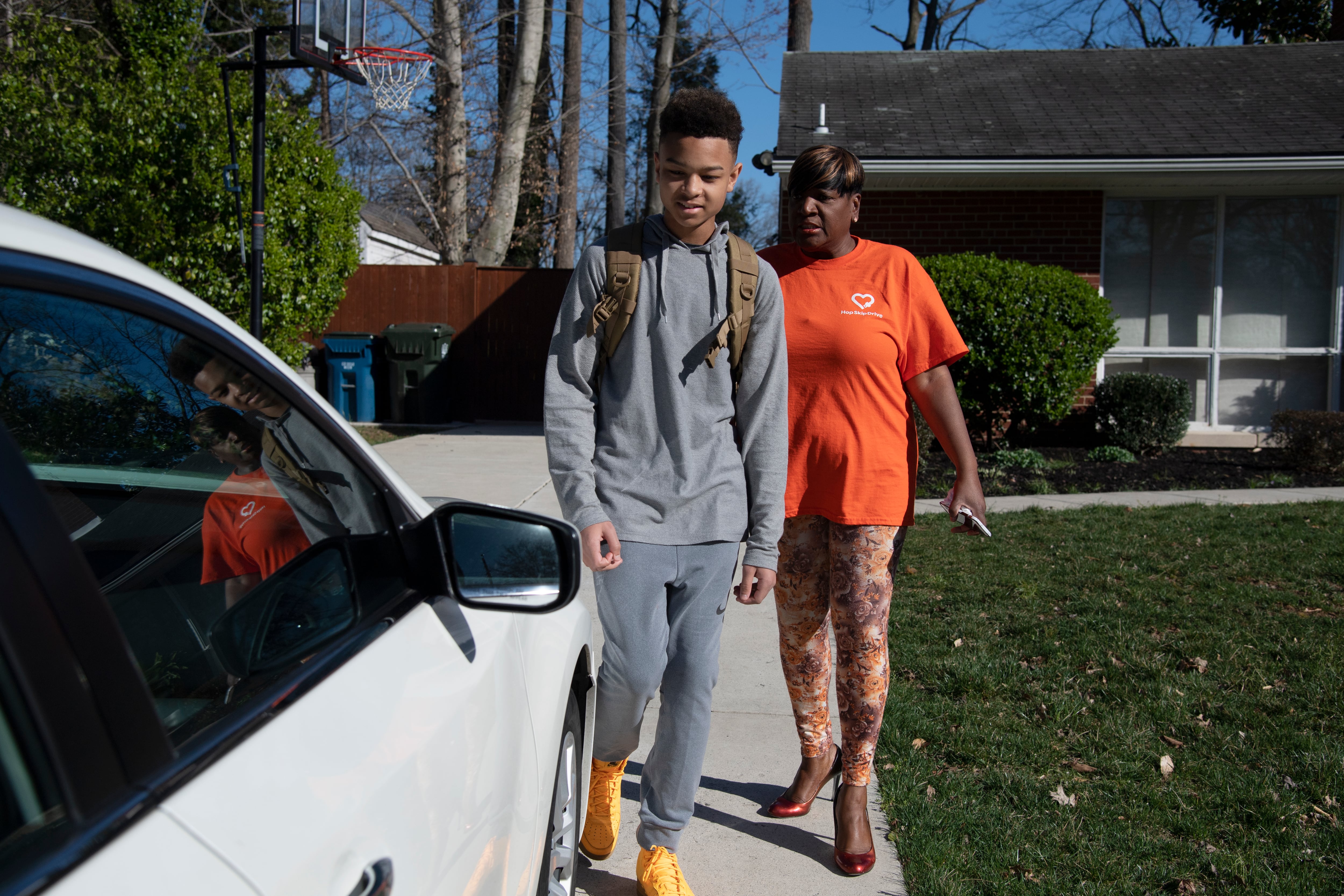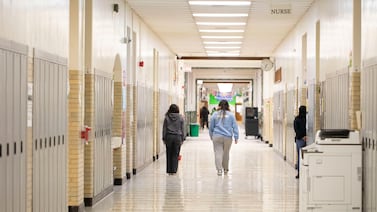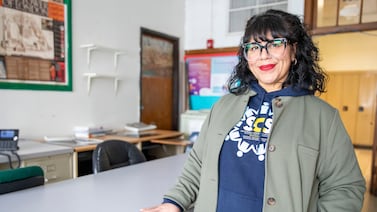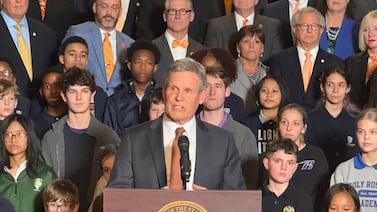Sign up for Chalkbeat’s free weekly newsletter to keep up with how education is changing across the U.S.
When Melissa Zivicki’s local public school district offered a personalized ride service to transport her son to a private school for an individualized education program, she was initially skeptical.
“I thought it was really weird sending my kid with a stranger,” Zivicki said.
But if Zivicki drove her son to school, she said she would be late to work every day and have to leave her job early as well. It felt untenable. So she accepted the offer, and before long began regularly sending her son to school through HopSkipDrive, a student-focused rideshare service.
Zivicki got more comfortable when she learned about the company’s background checks, and she liked that she could follow her son using in-app mobile tracking. Plus, each morning, she’d get a text with a picture of her driver and the time that they would arrive.
Started in California in 2014, HopSkipDrive began as a service to help busy parents get their children to soccer practice. The company now pitches itself as the solution for some of the biggest transportation problems in modern education.
The largest share of its business stems from students who have a federal right to school transportation, but whose needs don’t easily fit with the traditional yellow school bus transporting a lot of kids on a fixed route and schedule. These children include foster youth, homeless students, and students who have disabilities.
But HopSkipDrive also offers its routing software to school districts so they can plot more efficient school bus routes and sends drivers to far-flung neighborhoods to help schools boost their enrollment. In states across the country, it’s lobbied to change laws so that it can contract with school districts — transporting some of the most vulnerable students — while being regulated more like Uber or Lyft.
And increasingly, HopSkipDrive is tying its business to the explosion of school choice. This year the company is expanding into Kansas, Florida, and Louisiana, where it’s working on partnerships in Baton Rouge and New Orleans, which both operate districts that are nearly all charter schools. It’s also adding service in Maryland, North Carolina, Oklahoma, and Texas
“We’re not going to figure out how to do choice equitably and at scale without making transportation part of the conversation,” said Joanna McFarland, the founder and CEO of HopSkipDrive.
Observers say HopSkipDrive and other companies like it fill a real need — school choice is only as good as students’ ability to get to the school. But the expansion of HopSkipDrive also raises questions about cost, equity, student safety, and the growing privatization of school services.
The turn toward contracting with private rideshares coincides with a decline in the number of bus drivers on the road. But experts are skeptical that the added cost of contracting with private rideshares represents a sustainable solution. School districts’ transportation problems are driven in part by low wages related to ongoing budget challenges, which can be exacerbated when students leave neighborhood schools for other options.
“A lot of these solutions, although they might chip away at the problem, it’s not going to be as comprehensive,” said Sebastian Hickey, an analyst at the Economic Policy Institute who has studied school transportation issues.
Personal drivers for vulnerable students
Foster youth and homeless students protected under a federal law known as McKinney-Vento are guaranteed a federal right to continue at the same home school even after they move.
Schools are required to provide them transportation, but some foster students face a choice between an unsustainable commute and a stable education.
After just two weeks of driving her foster daughter to her home school around 20 minutes away from their house, Akira Bailey recalls feeling overwhelmed. Between gas prices, commute time, and driving another child to school, “I was like, ‘Wait, I don’t think that I can actually do this moving forward till the end of the year,’” said Bailey.
A co-worker recommended looking into HopSkipDrive. The school district covers the cost since her daughter is in foster care. Bailey now drops her daughter off at the nearby house of another foster student using the service so that they can ride to school together.
Kids who have to travel long distances to school often show up already tired, and they might miss out on extracurricular activities. For foster youth and homeless students there’s an added stigma of taking specialized bus services, Bailey added.
Still, parents have understandable safety concerns about HopSkipDrive. And advocates for students with disabilities have raised questions about the lower level of training and regulation on HopSkipDrive, when compared with school district bus drivers.
The company says the people they call CareDrivers all undergo comprehensive background checks and have at least five years of caregiving experience, which includes being a parent.
But HopSkipDrive’s costs can add up, which limits which districts are able to contract with the service — and to what extent.
Despite using HopSkipDrive in the morning, Bailey’s foster daughter takes the bus back home in the evening, which she doesn’t like very much. But the district can’t afford to offer a HopSkipDrive ride both there and back.
Transportation can make or break school choice
The expansion of school choice has complicated the transportation picture.
In some states, families are on their own if they want to enroll their children in charter or private schools. In others, public schools are required to provide transportation for students attending private and charter schools. In Ohio, these mandates have left many public school districts unable to transport their own students to school.
Partnering with public, charter, and private schools, HopSkipDrive is one of many companies building a new economy out of the growing movement for school choice and a broader fragmentation of education.
The company has lobbied in Missouri, Colorado, and Kansas to change state law to make it easier for school districts to use their services, and worked with the Georgia State Board of Education to change transportation regulation. Louisiana just passed a law that allows the company to partner with school districts.
Students in New Orleans have lots of choices for their education, but no guaranteed enrollment at a neighborhood school. While in theory the system champions choice, transportation constrains family’s realistic options, a study from the Education Research Alliance for New Orleans found.
“If you can’t get your kid to a school, that school isn’t actually available to you,” said Jon Valant, director of Brookings’ Brown Center on Education Policy and a co-author of the study.
More choice also means more competition for students and the funding attached to them. HopSkipDrive pitches itself as a solution for families seeking more educational choices, and as a solution to schools looking to increase enrollment in an increasingly competitive environment.
“Rather than cutting transportation as a cost issue, actually increasing transportation options can be a way of increasing enrollment,” McFarland said.
In Arizona, HopSkipDrive helped Tolleson Union High School District, an open-enrollment district west of Phoenix, increase enrollment by transporting students who lived outside of their district boundaries. HopSkipDrive’s private vehicles picked up around 200 students at their home and dropped them off at the nearest school bus stop.
The district received a $2 million private grant for the initiative. But after two years, the money ran out and the grant expired, forcing the district to end its partnership with HopSkipDrive.
In a statement, Tolleson Union said that while students and parents “loved” HopSkipDrive, “the price point was the only major hurdle.” The district said the service would be a great program “if it was partially subsidized by the State with the parent opting in to cover the difference.”
Hickey, the Economic Policy Institute analyst, worries that a loss of funding driven by school choice can make it harder for districts to solve their transportation problems by hiring more drivers or increasing pay.
HopSkipDrive says it has a solution: It offers an AI-powered bus routing software to deal with bus driver shortages and optimize district costs. Students whose bus stops are cut can be shuttled to school in a private rideshare instead.
At one charter school, rideshares remove stigma
At KIPP Kansas City, nearly 6% of all students arrive in cars driven by HopSkipDrive drivers — some 60 students in kindergarten through 12th grade. Most of them are in foster care or homeless.
“It’s been able to open doors for us to have a lot more diversity in the population we serve,” said Shauna O’Brien Baska, director of student support services.
Though KIPP Kansas City also contracts with a traditional bus service for most students, it’s considering expanding their HopSkipDrive offerings.
Since the cars are like any other, foster youth or students with housing instability aren’t singled out in the carpool line. The flexibility of HopSkipDrive also allows these students to attend football practice, club meetings, and before-school activities.
KIPP Kansas City tried out a variety of other supplemental services prior to HopSkipDrive, including taxi cabs. But Baska said HopSkipDrive is far more reliable and cost effective.
And since parents can track the whole ride from a mobile app on their phone, Baska can expect a call from parents asking why their child’s rideshare hasn’t moved if there’s traffic in the carpool line.
Norah Rami is a Dow Jones business reporting intern on Chalkbeat’s national desk. Reach Norah at nrami@chalkbeat.org.






